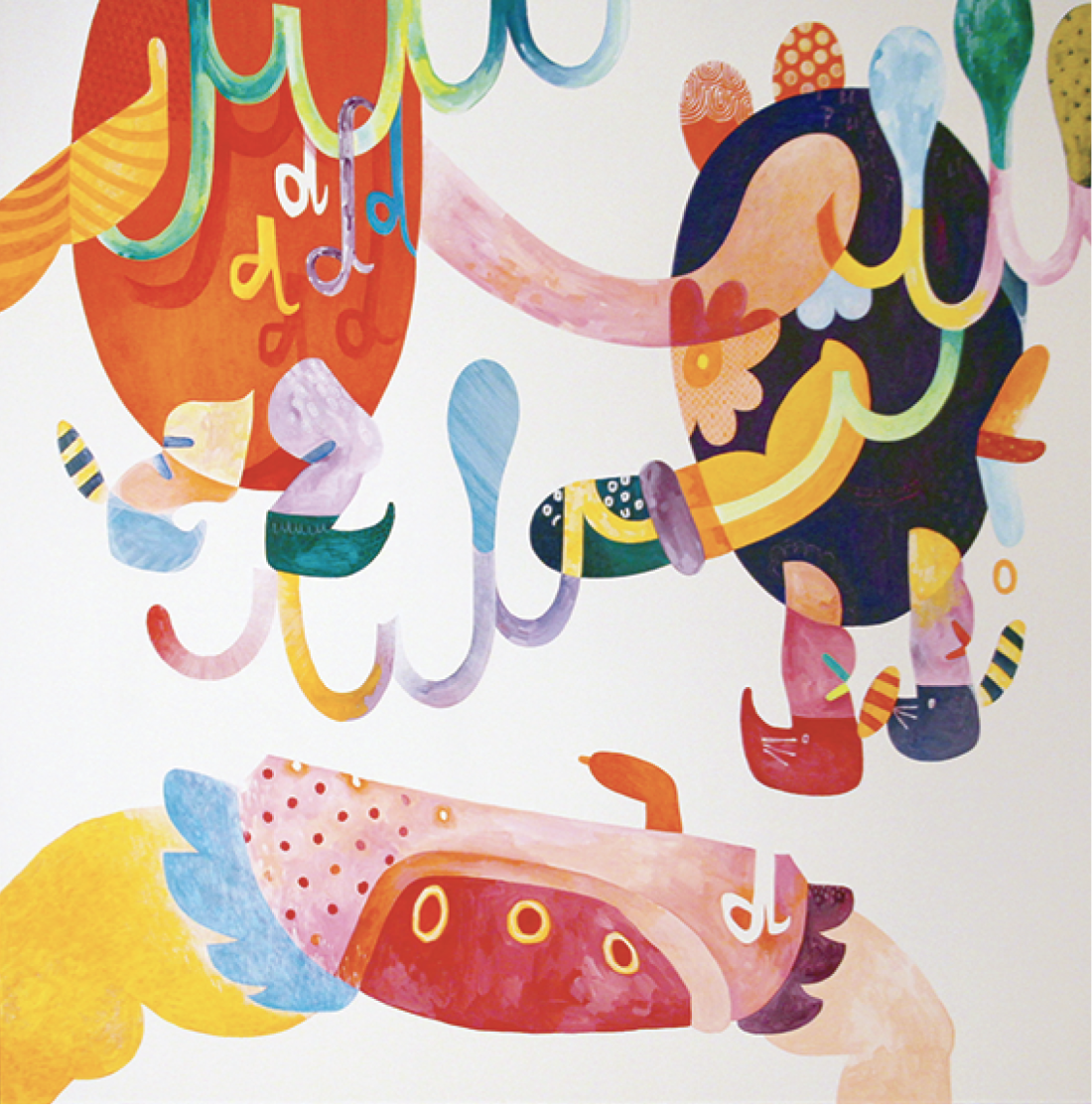Takashi Iwasaki
Joy can be a brow-raising concept for art criticism. Suspicion abounds on its intentions and sincerity. It may be looped into graduate seminar conversations about beauty and desire with a sprinkling of Freud’s death drive or Lacanian jouissance, for panache. Lurking along the liminal edges of pleasure, art object and viewer may elicit a harsh whip or knee-jerk declaration of “the market.” A stern finger-wagging follows; frowning on works that please a room like a pantone odalisque. I think a little joy might not be so bad these days and the survey of works included in Takashi Iwasaki’s exhibition at Lantern in Winnipeg would happily concur.
Iwasaki’s wall statement announces “Thinking about problems is a good way to solve them and to make the world a better place, but I think thinking positively and realizing that there is also joy in the world helps that, too, and is very essential. I want my work to present a more joyous side of the world for this reason.” Iwasaki’s forms and colours certainly evoke a nearly overwhelming sense of delight with a colour palette of free associative amusement, the everyday in glorious saturated technicolour. However, Iwasaki’s forms remain largely abstractions that encompass the familiar and while their compositions hint at a narrative, their subjects remain a personal one. Viewers familiar with Iwasaki’s work will recognize some of his older embroidery canvases from previous pop-up exhibitions around Winnipeg. The inclusion of older pieces like Tengusuzakuro, 2008, work nicely with Iwasaki’s newer paintings of 2016: the hard lines of embroidered forms and precise ribbons of colour appear to evolve into softer washes that are more painterly and less graphic in tone.

Takashi Iwasaki, Klariomp, 2009, hand embroidery on twill, 12 x 12 inches. All photographs courtesy Lantern, Winnipeg.
The exclusion of Iwasaki’s intimate collage work is productively absent from this exhibition, encouraging a new perspective on scale especially with his larger paintings such as Mametch, 2016, and Toppakou, 2015. According to Lantern’s director, Paul Zacharias, Mametch’s forms were motivated by the artist’s daughter—portrayed frolicking about in several bean-shaped iterations. This insight didn’t necessarily illuminate the painting for me; the overall tone stands on its own and confidently embodies a childlike exuberance with its composition, movement of bold colours and rounded forms.
A grouping of three acrylic paintings from 2016, Djuta, Hisuimame and Maomi, all demonstrate a sophistication of saturation with subtle patterns of measured brushwork offering a textile-like nuance. The newest paintings are worth noting in their looseness and while the joy is ever present, it is nice to see it in uneven gradients and with more textured complexity that enable a fresh perspective on the figure-ground relationship. The bright egg-like shapes resist any desire for translation and the overall effect is pleasing, like flipping through an Eric Carle book on Fabergé eggs.

Takashi Iwasaki, Mametch, 2016, Acrylic on canvas, 48 x 48 inches.
Other paintings in the exhibition such as Tobidashihon and Medihakonakami (both from 2009) are familiar inclusions with Iwasaki’s signature edged geometric forms flitting around a white canvas. Iwasaki’s joyous compositions consistently elicit whimsy and his embroidery is equally wonderful and technically accomplished. The show radiates positivity and genuinely complements the artist’s wall text. In past interviews with the artist, Iwasaki’s personal visualizations of the world around him were prodded for translation. One video profile published online in 2013 reveals a vacuum as a source of inspiration. Some may find the discovery of origins charming but I found myself less interested in deciphering Iwasaki’s canvases and more interested in examining the technical aspects of his work.
Dave Hickey, the art critic and enfant terrible of beauty once said, “I am interested in what’s beautiful to me. I’m not a civil servant. I feel betrayed by our cultural institutions because they aren’t giving me any joy—any experiences that I may know in my body and confirm in my consciousness.” Hickey has a point. However, I’m not sure I’d privilege joy over other emotions. Nor do I feel betrayed by exhibitions that could be perceived as being a bit of a downer or bordering on the grotesque. I don’t begrudge beauty or joy in a gallery; it just doesn’t leave me with much to chew on. Preferences aside, Iwasaki’s newer paintings show a divergence in scale and execution that hint at a possible new direction for his work beyond the signature pieces he’s known for. ❚
“The Works of Takashi Iwasaki” was exhibited at LANTERN, Winnipeg, from February 5 to February 27, 2016.
Courtney R Thompson is an arts writer living in Winnipeg.

